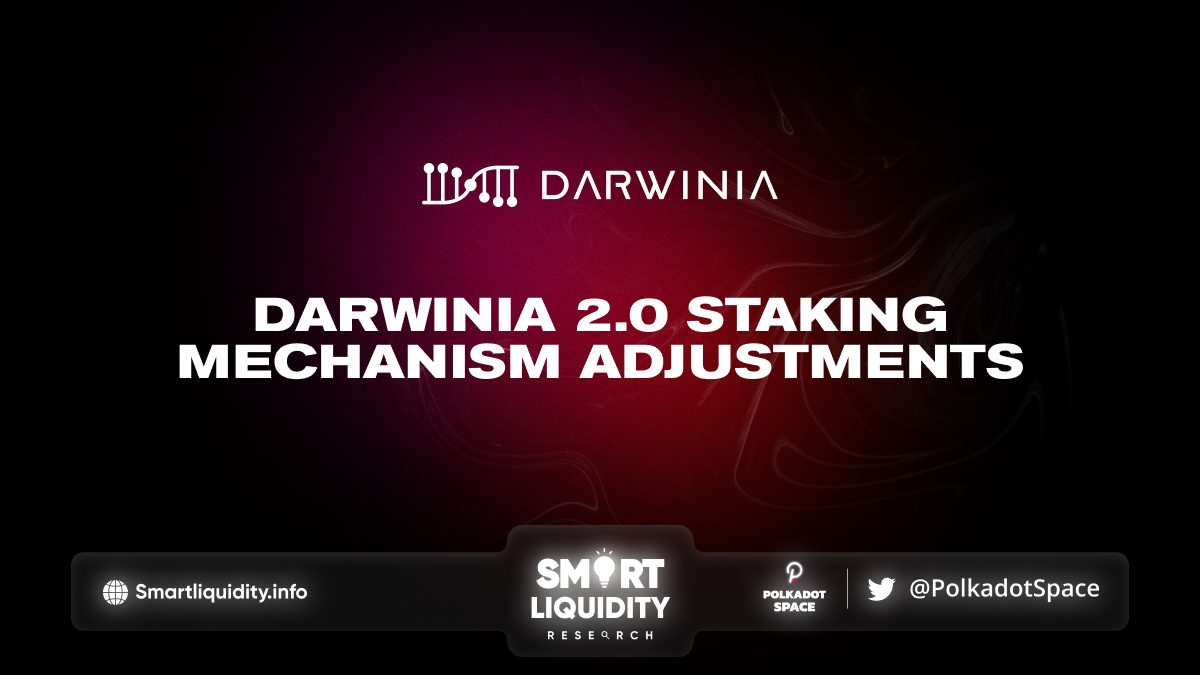Darwinia 2.0 Staking Mechanism Adjustments


FAQs For Darwinia 2.0 Staking Mechanism Adjustments
The Darwinia 2.0 Staking Mechanism Adjustments article prompted a lively discussion in the community, and inquiries about specific aspects of the adjustments, which they will summarize and address below:
1. “Why will the number of collators be reduced in Darwinia 2.0 compared to the number of validators in Darwinia 1.0?”
In Darwinia 1.0, the Darwinia solo chain is independent, with its own consensus, which relies on validators and value at stake to guarantee the economic security of the system; and too few of those validators increase the degree to which the Darwinia Network is centralized.
Darwinia 2.0, however, will be secured by the Polkadot Relay Chain validators, so will not require its own consensus model with value at stake.
Instead, collators will maintain Darwinia 2.0 by aggregating transactions into parachain block candidates, and producing state transition proofs for Relay Chain validators based on those blocks. Unlike validators, collators do not secure the network. If a Darwinia 2.0 block is deemed invalid, it will be rejected by Relay Chain validators. As a result, a collators’ responsibility is significantly reduced.
Actually, a single collator is sufficient for Darwinia 2.0 to function as a parachain, and while redundancy of collators is beneficial for reliability and stability, it does not result in increased performance, or enhance the security of the Polkadot network.
Overall, the number of collators in Darwinia 2.0 will be quite a bit smaller than the number of validators in Darwinia 1.0.
2. “How many collators will be in Darwinia 2.0?”
They are expecting that around 1/3 of the previous number of validators will be required.
3. “In the previous blog article it was mentioned that Darwinia 2.0 collator rewards will be
20%of the block rewards, but currently the Darwinia 1.0 validator rewards are set at50%of the block rewards, does this mean that the collator rewards will drop significantly?”
No. The 20% is not final and may ultimately need to be decided by a vote. The current general opinion of the community is ≥ 30%.
According to calculations, collator income won’t decrease considerably because there will be fewer collators than validators. With the same commission, a collator’s income will likely be higher than a validator’s.
4. “How are the delegator’s rewards calculated?”


totalStaking is the collator’s total backing.
5. ”As mentioned in the previous blog article, in Darwinia 2.0, delegators will only be able to select one collator. Why only one collator?”
This is only the current approach in order to simplify the staking system and make bugs less likely at the beginning. You can still choose more than one collator actually, it’s just a little more complicated. To begin with, using several accounts will allow you to select more than one collator.
In the near future, the staking system will allow for the selection of multiple collators by a single account.
6. “In the case of selecting only one collator, if the collator suddenly raises the commission, what should I do, can I change to another collator, and is there a waiting period when I change the collator?”
Yes, you can switch to a different collator without any delay.
In order to get the best staking returns, it is necessary to check the collator you have chosen frequently. If you notice a decrease in earnings, you should check to see if your collator has raised their commission level.
About Darwinia Network
Darwinia a cross-chain messaging infrastructure, which provides a light client-based, programmable, universal cross-chain messaging network for decentralized applications.




